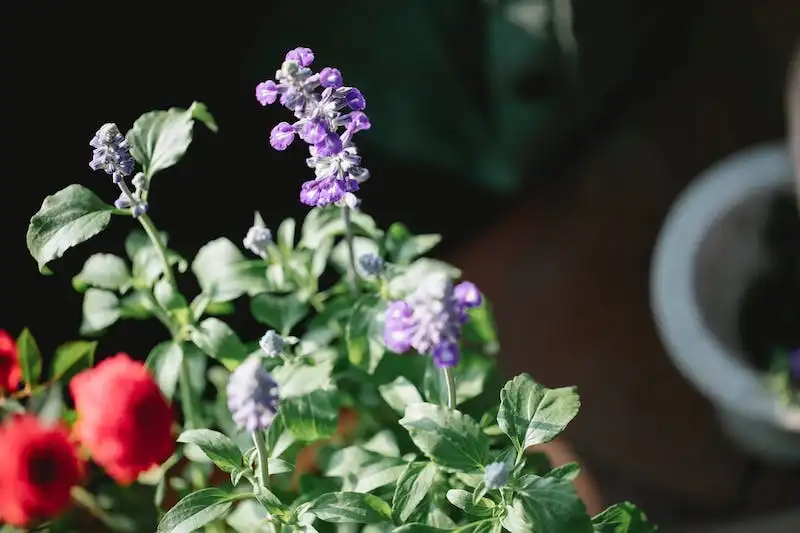Pyracantha, commonly known as Firethorn, is a versatile and attractive shrub that can enhance any garden or landscape. With its vibrant autumn colors, it is a favorite among gardeners who want to add a burst of color to their outdoor spaces. Pyracantha is also known for its dense, thorny branches, making it an excellent choice for hedging and providing security. In this article, we will explore how to grow Pyracantha successfully and enjoy its beauty for years to come.
One of the essential aspects of growing Pyracantha is pruning. Regular pruning helps maintain the plant’s shape and encourages new growth. It’s best to prune Pyracantha in late winter or early spring before new growth starts. Pruning should focus on removing any dead or damaged branches and shortening any overly long branches to promote a healthier and more compact growth habit.
Pyracantha can be trained against a wall, fence, or trellis, making it an excellent plant to use for vertical gardening. However, it’s important to avoid planting Pyracantha too close to the base of a wall, as this can cause damage. Instead, plant it a few feet away to allow for air circulation and prevent moisture buildup. Pyracantha can also be grown as a free-standing shrub or specimen plant.
When it comes to watering Pyracantha, it is essential to provide adequate moisture, particularly during dry periods. However, be cautious not to overwater, as Pyracantha can suffer from waterlogged soil. The best approach is to water deeply but infrequently, allowing the soil to dry out slightly between waterings. This will promote deep root growth and help the plant withstand periods of drought.
Pyracantha is relatively hardy and can tolerate a variety of soil conditions. However, it thrives best in well-draining soil rich in organic matter. If you have heavy clay soil, consider amending it with compost or other organic materials to improve drainage. Additionally, Pyracantha prefers full sun but can tolerate partial shade, though it may produce fewer berries in shadier spots.
Pyracantha is generally disease-resistant, but it can be susceptible to certain pests and diseases. Fireblight, scab, and aphids are some common issues that Pyracantha may encounter. Regularly inspect your plants for any signs of infestation or disease and promptly take action to address the problem. In some cases, you may need to apply appropriate treatments or consult with a professional.
The vibrant berries produced by Pyracantha are a valuable food source for birds, which adds to its appeal as a garden plant. If you want to maximize the berry production, consider planting multiple Pyracantha shrubs to increase cross-pollination and berry formation. Additionally, providing a water source, such as a birdbath or pond, can attract more birds to your garden.
In summary, Pyracantha, or Firethorn, is a beautiful and versatile plant that can add color, privacy, and ecological benefits to your garden. By following proper pruning techniques, providing adequate water and sunlight, and addressing any pests or diseases that arise, you can enjoy the beauty of Pyracantha for years to come. Whether you choose to grow Pyracantha as a free-standing shrub, a hedge, or against a wall, it is sure to fill your garden with vibrant colors and attract beneficial wildlife.
How to prune pyracantha or firethorn and why it stands out
Pruning pyracantha, commonly known as firethorn, is an essential step in its care and maintenance. This robust shrub with its thorny branches can quickly become overgrown and unruly if not properly pruned. In this section, we will explain how to prune pyracantha and why it is necessary.
Firstly, it is important to note that pyracanthas can be grown against a wall or fence, or be allowed to grow freely. Some gardeners prefer to train pyracantha against a wall or fence, as this can contribute to a more formal and structured look. However, pyracanthas can also be left to grow naturally, which creates a more informal and relaxed aesthetic.
When pruning pyracantha, it is important to remove any overgrown or dead branches. This not only improves the overall appearance of the shrub but also promotes new and healthy growth. Additionally, regular pruning helps to maintain the pyracantha’s shape and prevent it from becoming too dense and thick.
One common question regarding pyracantha pruning is when to do it. Generally, the best time to prune pyracanthas is in late winter or early spring, before the new growth begins. However, some varieties, such as the Saphyr series, can also be pruned in early summer after the main flush of flowers has finished.
When pruning pyracantha, it is important to wear gloves and protective clothing, as the thorns can be quite vicious. Start by removing any dead or damaged branches, cutting them back to the main stem or branch. Next, thin out the shrub by removing any overcrowded branches that are crossing or rubbing against each other. This will allow more light and air to reach the inner parts of the shrub, promoting better overall growth.
For pyracanthas that are trained against a wall or fence, it is important to regularly tie in new shoots to help maintain their shape and prevent them from sprawling. If the shrub becomes too large or overgrown, it may be necessary to completely remove some of the older branches to rejuvenate the plant. However, be careful not to remove more than one-third of the plant’s branches in a single pruning session, as this can cause stress and affect its ability to recover.
Another important aspect of pyracantha pruning is pest control. Pyracanthas are known to attract birds, which can help keep pests like aphids under control. However, if pests become a problem, there are various methods to handle them, including using natural remedies or seeking professional advice.
In conclusion, pruning pyracantha or firethorn is an essential part of its care and maintenance. By following the guidelines mentioned above, you can ensure that your pyracanthas remain healthy, well-shaped, and free from pests. Whether you choose to train them against a wall or fence or let them grow naturally, regular pruning will contribute to their overall beauty and make them stand out in your garden.
How to grow Pyracantha (common name Firethorn)
Growing Pyracantha, also commonly known as Firethorn, can be somewhat challenging for beginner gardeners. However, with proper care and attention, it is possible to successfully cultivate this vibrant shrub. Here are some guidelines on how to grow Pyracantha:
- Planting: Pyracantha is best planted in well-drained soil and prefers a sunny location. It can tolerate some shade but does best with plenty of sunlight.
- Pruning: Firethorn shrubs can be pruned to maintain their shape and promote healthy growth. If left unpruned, they can become overgrown and tangled. Prune them in early spring or late winter to encourage new growth and flowering.
- Watering: Pyracantha requires regular watering, especially during dry spells. However, be careful not to overwater, as this can lead to root rot. Keep the soil slightly moist, but not soggy.
- Frost protection: Pyracantha is quite tough and can handle frosts once established. However, young plants may need protection from heavy frosts. Consider covering them with horticultural fleece or bringing them indoors during extreme cold spells.
- Berry production: One of the key features of Pyracantha is its vibrant berry production. The berries start off yellow or white and then turn red, orange, or even black later in the year. These berries not only contribute to the shrub’s beauty but also attract birds.
- Dealing with thorns: Pyracantha shrubs have sharp thorns, so be cautious when handling or pruning them. Wear protective gloves and long sleeves to avoid getting scratched.
- Pest and disease control: Pyracantha shrubs are generally resistant to most pests and diseases, including scab and fireblight. However, they can occasionally suffer from issues such as aphids or brown scale. Regularly inspect your plants and take appropriate action if required.
- Attracting bees and birds: Pyracantha flowers are loved by bees, making it a great addition to pollinator-friendly gardens. Additionally, the berries attract birds, providing a food source for them during the winter months.
- Hedging: Pyracantha can be used as an effective hedging plant due to its dense growth and thorny branches. It provides a thick barrier, making it difficult for intruders to pass through. Just ensure that you trim and shape the hedge regularly to maintain its desired height and width.
By following these guidelines, you can successfully grow Pyracantha, commonly known as Firethorn, in your garden. It is a beautiful and resilient shrub that can add color and interest to any outdoor space. Whether you choose to plant it as a standalone shrub or as part of a hedge, Pyracantha is sure to delight both you and your garden visitors.
Pyracantha is a tough shrub
Pyracantha, commonly known as Firethorn, is a tough and hardy shrub that can withstand a variety of growing conditions. It is a versatile plant that can be grown in many parts of the world, including Scotland. Pyracantha forms dense thickets of thorny branches, making it an excellent choice for hedges and security barriers.
The main attraction of Pyracantha is its vibrant berries, which appear in autumn and can last well into winter. These berries come in a range of colors, including red, orange, and yellow, and attract birds to the garden. However, be aware that the berries are somewhat vicious, with sharp thorns that can cause irritation if not handled carefully.
Pyracantha is a relatively low-maintenance shrub, but it does benefit from regular pruning to keep it in shape and encourage new growth. Pruning is best done in late winter or early spring before the new growth appears. When pruning, it is important to wear protective gloves to avoid getting scratched by the thorns. Prune Pyracantha by cutting back branches to a couple of buds above the base, and remove any dead or diseased wood.
When choosing a location for Pyracantha, it is best to select an open spot that receives full sun. Pyracantha can tolerate some shade, but it will produce more berries and flowers in full sunlight. The soil should be well-draining and fertile, as Pyracantha does not like to have its roots sitting in water. Watering should be done regularly, especially during dry periods, to help the shrub establish and thrive.
Pyracantha is generally a disease-free shrub, but it can suffer from a few common pests and diseases. Fireblight, a bacterial disease that causes wilting and blackening of the branches, can affect Pyracantha. To prevent fireblight, it is important to ensure good air circulation around the plant and to remove any infected branches. Other pests that can attack Pyracantha include aphids, scale insects, and spider mites, which can be controlled with insecticidal sprays or natural predators.
In summary, Pyracantha, or Firethorn, is a tough and adaptable shrub that can thrive in various growing conditions. Its attractive berries, dense thorny branches, and resistance to diseases make it a popular choice for hedging and security purposes. By providing the right conditions, regular pruning, and dealing with any pests or diseases that may arise, you can enjoy the beauty of Pyracantha year after year.




